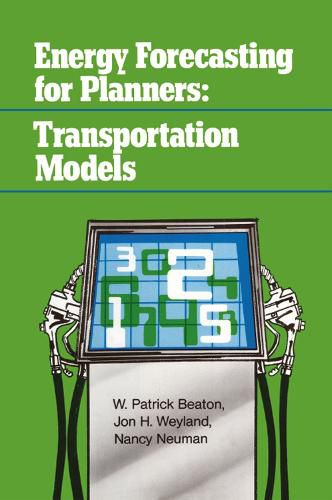Readings Newsletter
Become a Readings Member to make your shopping experience even easier.
Sign in or sign up for free!
You’re not far away from qualifying for FREE standard shipping within Australia
You’ve qualified for FREE standard shipping within Australia
The cart is loading…






With the increased public awareness of a deepening energy crisis, governments at all levels have begun to examine their ability to act meaningfully in response to forms of short- and long-term energy-related political pressures. Emergency preparedness, conservation programs, and contingency planning have become watchwords in our new energy bureaus. The existence of a model provides an element of objectivity to the agency’s policy pronouncements and, through the overlap in the energy agency’s scope with that of other departments, the views of the energy agency are now made a part of regional development plans.This volume provides the tools to shape and implement community plans and programs relating to energy use in vehicular travel. Fully documented and effective fuel consumption forecasting models are clearly presented. These models range from static and flow adjustment equations delineating fuel consumption to analyses that explain patterns of change for vehicular use.This book shows the statistical procedures used to estimate the models, as well as the procedures used to test the models’ significance. The authors include computer algorithms along with full, working examples; both are presented together with an analysis of all the principal alternative approaches. Finally, problems such as the distribution of fuel reserves to meet needs in particular areas within a jurisdiction are explored.
$9.00 standard shipping within Australia
FREE standard shipping within Australia for orders over $100.00
Express & International shipping calculated at checkout
With the increased public awareness of a deepening energy crisis, governments at all levels have begun to examine their ability to act meaningfully in response to forms of short- and long-term energy-related political pressures. Emergency preparedness, conservation programs, and contingency planning have become watchwords in our new energy bureaus. The existence of a model provides an element of objectivity to the agency’s policy pronouncements and, through the overlap in the energy agency’s scope with that of other departments, the views of the energy agency are now made a part of regional development plans.This volume provides the tools to shape and implement community plans and programs relating to energy use in vehicular travel. Fully documented and effective fuel consumption forecasting models are clearly presented. These models range from static and flow adjustment equations delineating fuel consumption to analyses that explain patterns of change for vehicular use.This book shows the statistical procedures used to estimate the models, as well as the procedures used to test the models’ significance. The authors include computer algorithms along with full, working examples; both are presented together with an analysis of all the principal alternative approaches. Finally, problems such as the distribution of fuel reserves to meet needs in particular areas within a jurisdiction are explored.